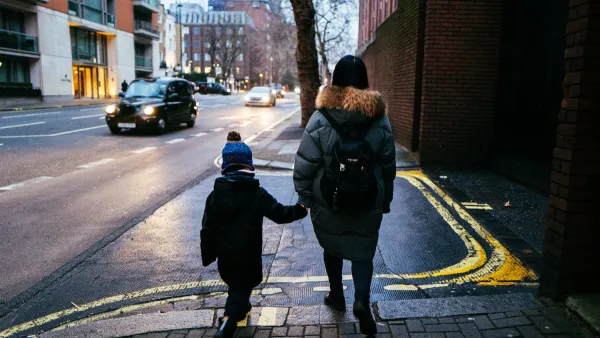Dr. Lawrence Frank (U. of British Columbia) et.al. looked at Atlanta to make the connection between health reform and transportation reform, devising a clever 'energy index'. While the index rose in denser neighborhoods, it didn't in mixed-use ones.
The results of the survey were surprising. Density without mixed use produced greater amounts of walking and biking than those with mixed use.
"Frank, Steve Winkelman of D.C.'s Center for Clean Air Policy, and Michael Greenwald of the Seattle-based firm Urban Design 4 Health used data from Atlanta's SMARTRAQ survey to map the amount of calories burned by various blends of walking, transit, and car use. That calorie-burning factor was dubbed the "energy index."
The "energy index" of Atlantans increased significantly as their neighborhoods grew denser, according to the study, and the number of calories they used on motorized travel shrank in denser, more walkable areas...In neighborhoods where mixed-use development grew, bringing housing closer to commercial property, the energy used for driving and walking decreased, leaving Atlantans' "energy index" unaffected."
"This result likely demonstrates that the energy required to travel in a very mixed land use pattern is lower for both walking and driving - with no real impact on the relationship between the two modes," the study's authors wrote.
From Streetsblog, Transportation Reform Is Health Reform:
"For every long-term $1 increase in gas prices, the national obesity rate drops by 10 percent, according to Courtemanche. That relationship goes a long way towards explaining why the House and Senate health care bills include "community transformation" grants to entice cities and towns into building bike paths, playgrounds, and other pedestrian-friendly improvements."
Thanks to Catherine Cecchi
FULL STORY: Study: Even in Car-Centric Atlanta, Transport Reform is Health Reform

Analysis: Cybertruck Fatality Rate Far Exceeds That of Ford Pinto
The Tesla Cybertruck was recalled seven times last year.

National Parks Layoffs Will Cause Communities to Lose Billions
Thousands of essential park workers were laid off this week, just before the busy spring break season.

Retro-silient?: America’s First “Eco-burb,” The Woodlands Turns 50
A master-planned community north of Houston offers lessons on green infrastructure and resilient design, but falls short of its founder’s lofty affordability and walkability goals.

Test News Post 1
This is a summary

Analysis: Cybertruck Fatality Rate Far Exceeds That of Ford Pinto
The Tesla Cybertruck was recalled seven times last year.

Test News Headline 46
Test for the image on the front page.
Urban Design for Planners 1: Software Tools
This six-course series explores essential urban design concepts using open source software and equips planners with the tools they need to participate fully in the urban design process.
Planning for Universal Design
Learn the tools for implementing Universal Design in planning regulations.
EMC Planning Group, Inc.
Planetizen
Planetizen
Mpact (formerly Rail~Volution)
Great Falls Development Authority, Inc.
HUDs Office of Policy Development and Research
NYU Wagner Graduate School of Public Service



























